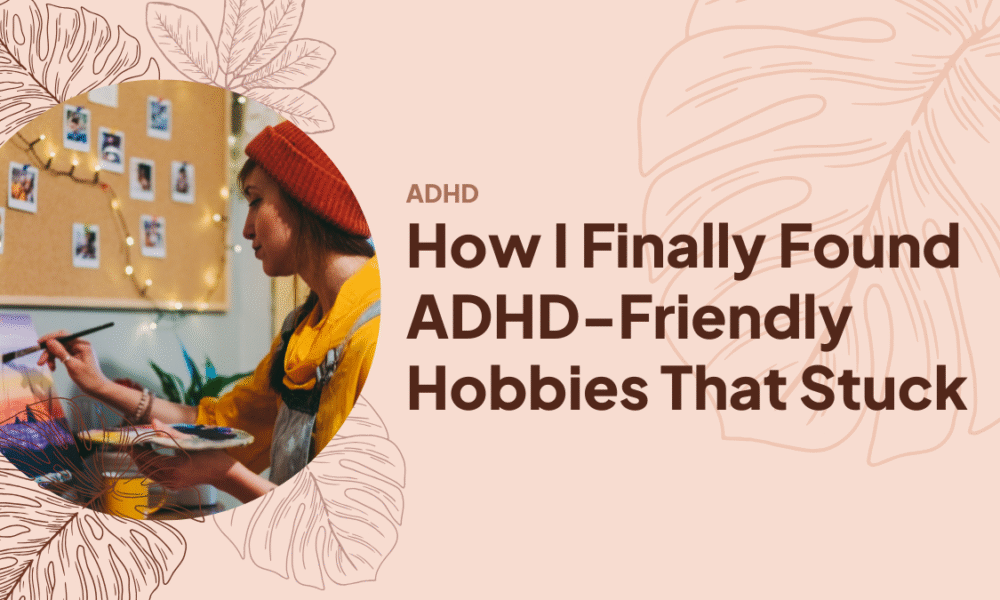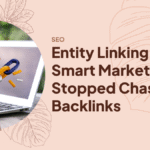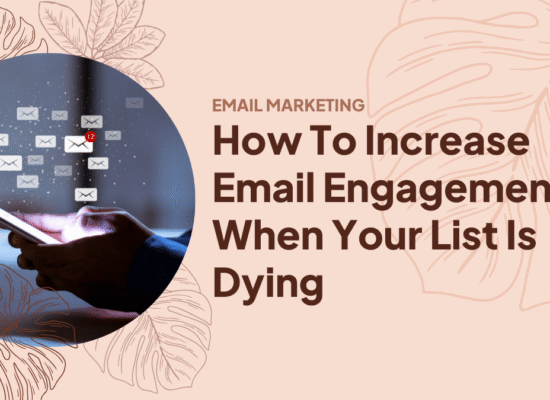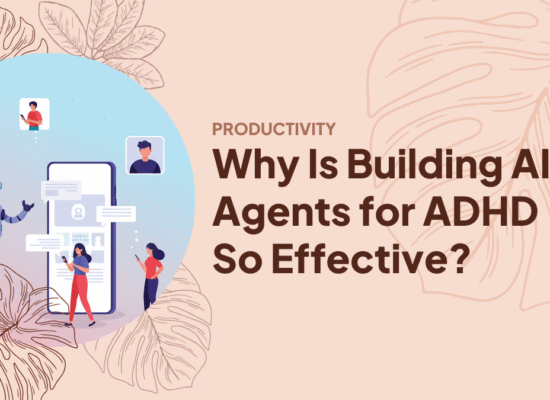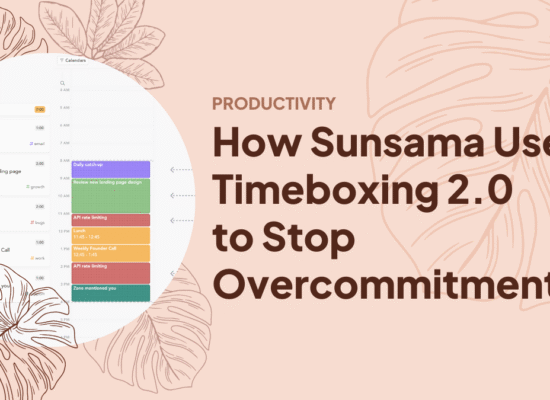Table of Contents
- Test before investing: Start with low-cost basic kits to evaluate genuine interest and energy compatibility before committing to expensive equipment or long-term commitments.
- Listen to your body’s signals: Learn to recognize when physical tiredness indicates it’s time to pause, even when your mind wants to continue, to prevent burnout and maintain sustainable enjoyment.
- Choose progression over repetition: Seek hobbies with clear advancement levels and skill development rather than repetitive activities that offer no growth or challenge.
Adult coloring books were supposed to be perfect for my ADHD brain.
Everyone said so. The internet said so. Even my therapist suggested them.
I bought stacks of intricate designs and premium colored pencils. I was ready to find my zen through mindful coloring.
Instead, I’d start a page, get distracted, and completely forget about it for months.
The coloring books gathered dust while my brain craved something else entirely. Something I’d already discovered years earlier without realizing it.
Before my ADHD diagnosis, I’d fallen into calligraphy completely by accident. What started as casual interest became a years-long obsession that connected me with communities, taught me skills, and never felt like work.
The difference wasn’t the activity itself. It was how each hobby engaged my brain’s reward system. Finding truly ADHD-friendly hobbies requires understanding your unique neurological patterns, not following generic advice.
Your Brain on Dopamine
ADHD brains have differences in dopamine transporters that lead to decreased dopamine levels. This affects mood, attention, and decision-making in ways that make certain activities irresistible and others utterly forgettable.
When I described calligraphy as “tickling my brain,” I was experiencing what researchers call the brain’s reward cascade. My brain was getting the dopamine hits it desperately needed.
Coloring books offered no such rewards.
Calligraphy had levels. Drills led to letters, letters to words, words to developing my own style. Each stage unlocked new challenges and skills.
I was essentially playing a real-life video game where I was the main character, progressing through increasingly complex challenges.
Coloring books had no progression system. You color inside lines. You finish a page. You start another identical page.
My brain needed advancement, not repetition.
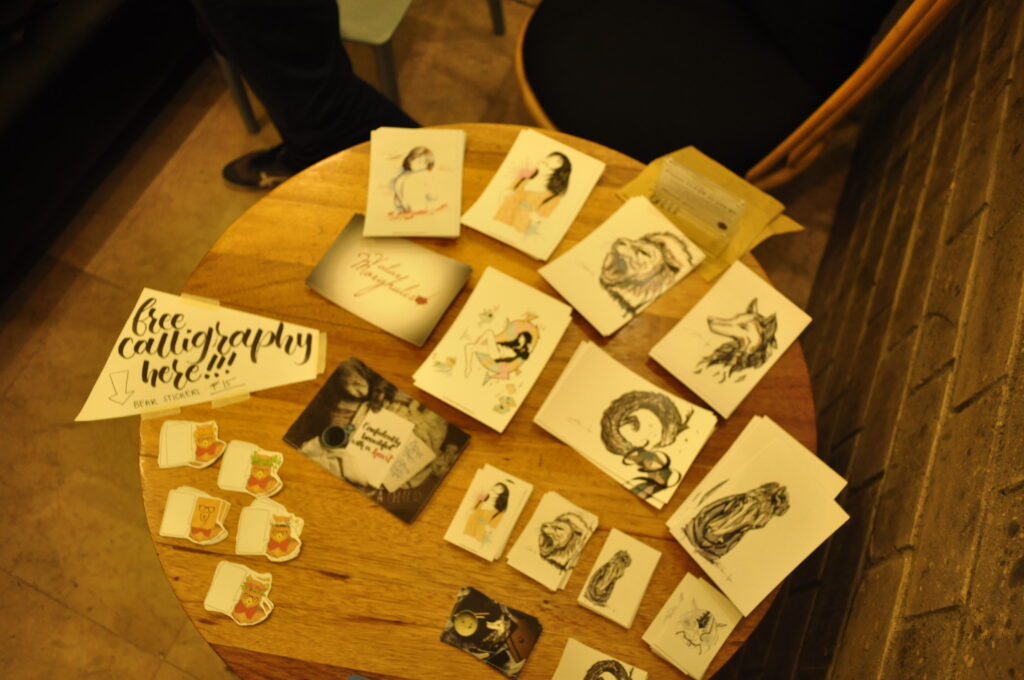
The Gamification Discovery
The calligraphy community amplified everything. I met artists I admired, volunteered at events, and formed genuine friendships around shared passion.
But when I moved cities and lost that community, calligraphy didn’t lose its appeal. The gamification was internal.
I realized I’m naturally competitive with myself. Comparing my current skills to my past abilities gave me that same dopamine rush as external validation.
This pattern repeated with reading challenges. I went from five books in 2021 to twelve in 2022 to twenty-four in 2023.
Then I burned out completely.
The warning signs were clear once I learned to recognize them. I lost interest in picking up books. Reading became a chore instead of pleasure. I felt tired just thinking about my next book.
I’d pushed my internal competition too far.
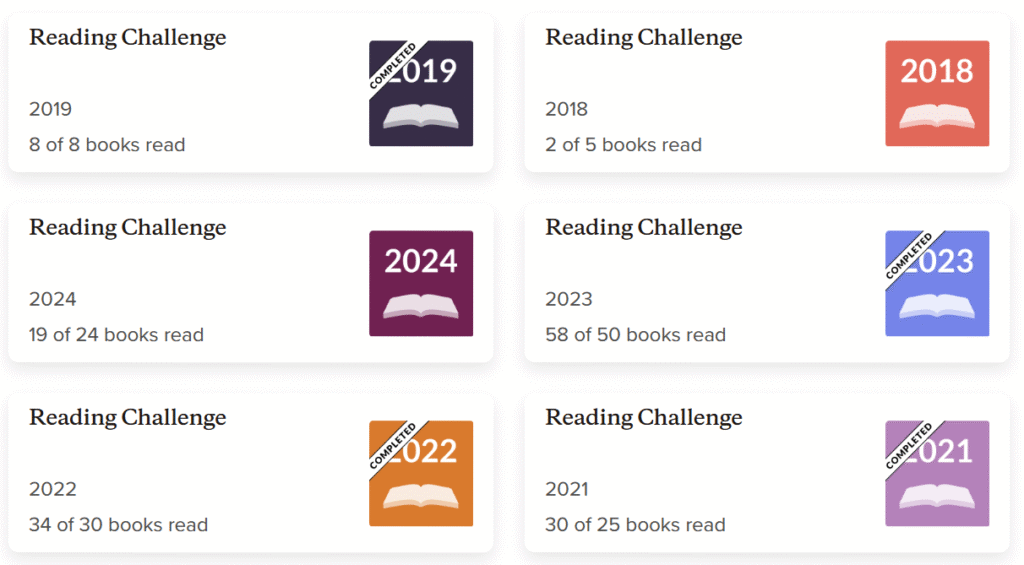
Building a Better Framework
After my diagnosis, I developed a completely different approach to trying new hobbies. No more going “all in” with expensive equipment and high expectations.
Now I test everything first.
When my husband’s gundam building interested me, I didn’t start with his complex models. I found simple plastic figures under a thousand pesos and characters I genuinely liked.
I picture myself doing the entire process before investing. If I can see myself completing it from start to finish, that’s my green light.
But I still only buy basic kits initially.
The framework has four checkpoints:
- Interest alignment – Does this genuinely spark curiosity, or do I think it should?
- Time commitment – How much energy will this require from start to finish?
- Financial investment – Can I test this affordably before committing?
- Cognitive load – Will this drain or restore my mental energy?
That last point became crucial once I understood my work-life energy balance.
Reading Your Energy Signals
I spend my workdays using intensive brain power for digital marketing strategy and content creation. By evening, my mind needs different stimulation. This understanding helped me develop better work habits that support rather than drain my ADHD brain.
Activities that engage my hands while giving my analytical brain a rest work perfectly. Building models, following paint-by-number guides, or practicing calligraphy all fit this category.
Learning to code websites sounds interesting, but coding itself drains rather than restores me. Art workshops, on the other hand, combine learning with social connection and creative expression.
I’ve learned to listen when my body signals it’s time to stop, even when my mind wants to continue. When my hand gets tired during coloring, I put the pens down and switch activities.
ADHD affects the brain, but balancing physical and mental energy makes everything work better.

The Support System Factor
Having my husband nearby when I build models changes everything. Instead of hyperfocusing for three hours trying to solve one stuck piece, I can simply ask for help. This works especially well in our condo living space where we can easily collaborate without disrupting each other’s activities.
This isn’t just about having a built-in support system. It’s about creating what I call “me time together” – parallel activities where we’re both engaged but available for each other.
Research shows adults with ADHD have higher and more frequent episodes of hyperfocus during hobbies and creative tasks. This can be incredibly productive or completely draining, depending on the context.
When I’m hyperfocusing productively at work on an interesting project, I protect that state. I tell my husband not to disturb me and ask him to text instead of speaking, even though we’re sitting right next to each other. These intentional daily habits help me manage time blindness and maintain productive focus.
When hyperfocus turns into doom scrolling at bedtime, that’s when I need intervention.
Learning the difference took time and honest self-reflection.
The ADHD Archipelago
Meeting other people with ADHD revealed something beautiful. We’re like islands in an archipelago – different landmasses in the same ocean.
The ocean is ADHD itself. Each island represents how individual brains manage similar symptoms differently.
Some people thrive with high-intensity martial arts that stimulate the frontal cortex and increase attention-supporting neurotransmitters. Others need gentle, repetitive activities that calm their nervous systems.
Some require community and accountability. Others work best in solitude.
The key is finding activities that work with your specific island’s terrain, not fighting against your natural landscape.
What ADHD-Friendly Hobbies Actually Work
Forget the generic “ADHD-friendly hobby” lists. They’re usually written by people who don’t understand how our brains actually function.
Instead, look for activities with these characteristics:
- Clear progression systems – Can you level up your skills over time?
- Immediate feedback – Do you see results quickly enough to maintain interest?
- Flexible engagement – Can you participate when your energy allows?
- Multiple entry points – Are there different ways to get involved based on your current capacity?
- Sensory variety – Does the activity engage multiple senses without overwhelming them?
Finding Your Perfect ADHD-Friendly Hobbies Match
Physical activities like dance, martial arts, or rock climbing work because they combine movement with skill development. The body gets exercise while the brain gets creative stimulation.
Creative pursuits like music, digital art, or photography harness hyperfocus productively. You can lose hours perfecting a piece without feeling drained afterward.
Technology-based hobbies like game development or content creation transform screen time into skill building rather than mindless consumption.
The One Rule That Matters
If you’re newly diagnosed and overwhelmed by hobby options, ask yourself one simple question:
Will this spark joy without breaking the bank?
That’s it. Everything else is secondary.
Joy indicates your brain’s reward system is engaged. Affordability lets you test without pressure.
Start small. Test thoroughly. Scale gradually.
Most importantly, be kind to yourself throughout the process.
I spent years as a neurodivergent person forced into neurotypical activities. Fighting against your brain’s natural patterns will deplete your energy and crush your enthusiasm.
Find what genuinely interests you and sparks that internal excitement. Follow activities that make you lose track of time in the best possible way.
Your ADHD brain isn’t broken. It just needs the right playground.
When you find hobbies that celebrate rather than constrain your differences, everything changes. The activities that once felt impossible become the ones you can’t imagine living without.
Trust your instincts. Honor your energy patterns. Build your own framework.
Your brain will thank you for it.
Ready to Organize Your Life Like Your Favorite Hobby?
Frequently Asked Questions
How do I know if a hobby will work for my ADHD brain before trying it?
Picture yourself doing the entire process from start to finish. If you can visualize completing it and feel genuinely excited rather than obligated, that’s your green light to try a basic version.
What should I do if I get hyperfocused on a hobby to the point of burnout?
Watch for warning signs like losing interest, feeling tired when thinking about the activity, or when it becomes a chore rather than enjoyable. Trust the process of stepping away and allow yourself recovery time.
Are expensive hobby supplies worth it for someone with ADHD?
Start with affordable basic supplies first to test genuine long-term interest. Only upgrade to premium equipment after you’ve proven sustained engagement with the activity over several months.
Maria is an accomplished digital marketing professional, specializing in content marketing and SEO. She's a neurodivergent who strives to raise awareness, and overcome the stigma that envelopes around mental health.
